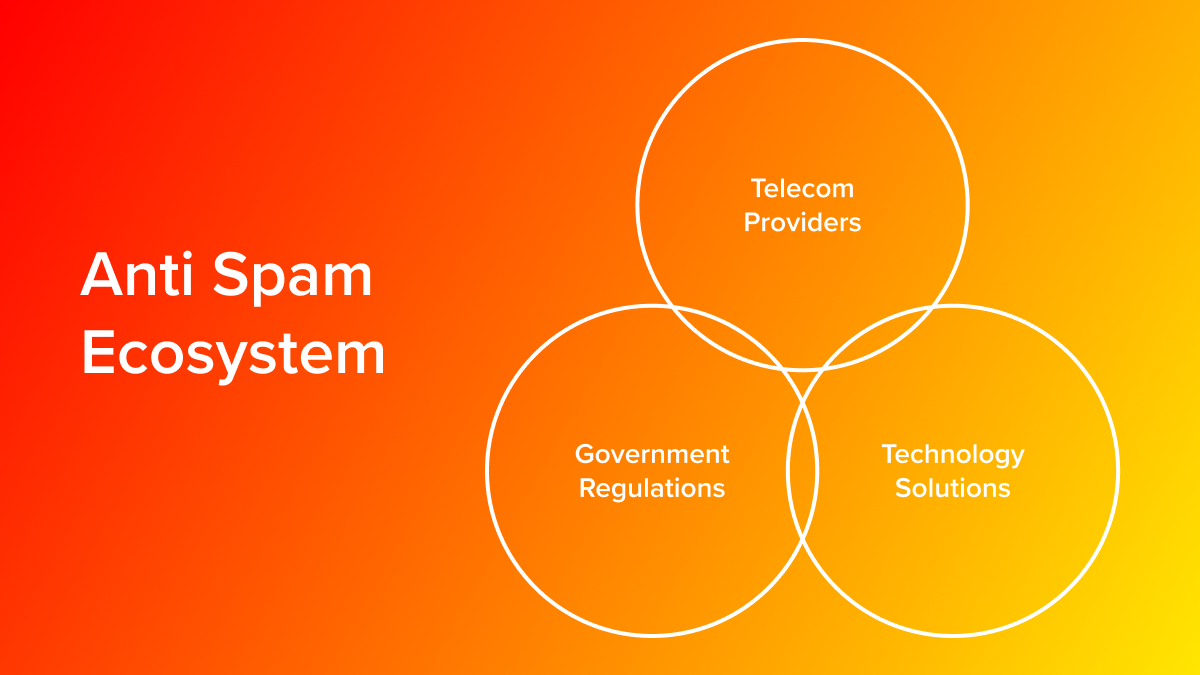Love This Blog? Sign Up for Our Newsletter for More
SignupLive Voicemail Complete Guide
Unlock Your Content
April 25, 2024

7 min

Note: This is the 1st article in our 5-part series about the spam call ecosystem, how “Spam/Scam Likely” flags are applied, and how businesses can reduce risk and build number reputation.
In an era where mobile phones are an integral part of our daily lives, few things are more frustrating than answering a call only to be greeted by an unsolicited sales pitch or an automated voice claiming you've won a free vacation.
These are the familiar nuisances of spam calls, and they've become a pervasive issue for both consumers and businesses alike.
But how do these annoying calls get identified?
What role does the anti-spam ecosystem play in the fight against them?
In this first installment of our blog series, we'll embark on a journey to uncover the intricacies of this ecosystem, shedding light on the various players and mechanisms that work together to identify and combat spam calls.
The system is getting better, but legitimate calls continue to get blocked too.
By gaining a deeper understanding of this landscape, businesses can take proactive steps to ensure their legitimate calls avoid being inadvertently labeled as spam.
Let’s begin.
The battle against spam calls involves a diverse cast of characters, each with a specific role to play in protecting consumers from unwanted intrusions.
Let's take a closer look at these key players:
Telecom providers like AT&T, T-Mobile/Sprint and Verizon play a central role in the anti-spam ecosystem. They deploy technologies and systems that help identify and flag spam calls before they reach your phone. These providers are on the front lines of defense, safeguarding their subscribers from nuisance calls. In addition to in-house carrier resources, these carriers partner with companies like Hiya, FirstOrion and TNS (respectively) in their efforts to keep subscribers from having to receive unwanted calls.
Government regulatory bodies, such as the Federal Communications Commission (FCC), enact rules and regulations aimed at curbing spam calls. These regulations often set guidelines for call authentication (e.g. STIR/SHAKEN), call labeling, and penalties for violators.
Compliance with these regulations is essential for businesses.
Innovative technology solutions form the backbone of spam call detection. These solutions employ a range of techniques - from call analytics to machine learning to crowdsourced data - to identify patterns consistent with spam behavior.
They continuously adapt to evolving spam tactics.
Now that we've identified the key players, let's explore how spam calls are detected in the first place. While the exact methods may vary, here are some common techniques:
Advanced algorithms analyze call patterns and behavior to detect anomalies consistent with spam. For instance, rapid-fire calls to multiple numbers, a high volume of calls from a single source, or a high percentage of short duration calls might trigger a spam alert.
Machine learning models are trained on vast datasets of call data, allowing them to recognize spam-like characteristics and adapt as spammers change their tactics.
Many anti-spam systems rely on data contributed by users who report spam calls. This collective data helps identify new spam numbers and patterns.
Anti-spam systems often deploy a solution dubbed, ‘Honeypots’ which are unassigned and unallocated phone numbers that actively receive and ‘listen’ to calls placed to them.
Theoretically: you should never call into a Honeypot if your data is up to date and accurate. Because spammers do not place a premium on data quality (who they are calling) many calls end up terminating in Honeypots, giving carriers and their analytic partners additional evidence that a call is unwanted.
Why? Unassigned/unallocated phone numbers should theoretically not be receiving calls -- naturally, the more Honeypots a number calls, the stronger the spam signal.
The ultimate goal of the anti-spam ecosystem is to enhance the user experience by reducing or eliminating unwanted calls.
When spam calls are correctly flagged as “Spam Likely,” “Scam Likely,” and similar, consumers have the choice to ignore or block them.
This improves the overall quality of phone communications, making it easier for individuals and businesses to connect without interference (and harder for spammers).
Furthermore, things are going to get even more interesting in this regard as Apple and Google (via their phone operating systems) leverage Live Voicemail and call screening capabilities to provide users with much more context for the calls they receive.
Understanding the anti-spam ecosystem is essential for both consumers and businesses.
Telecom providers, government regulations, and technology solutions work together to create a safer and more enjoyable calling environment.
By employing an array of detection methods including call analytics, machine learning, crowdsourced data and honeypots, the ecosystem is becoming smarter and better equipped to filter out unwanted calls and deliver legitimate ones.
By aligning with these efforts and adopting best practices, businesses can reduce the risk of their legitimate calls being mistaken for spam.
In the next installment of our series, we'll explore the characteristics that define a spam call and how they impact businesses. Stay tuned for more insights into the fight against spam calls.